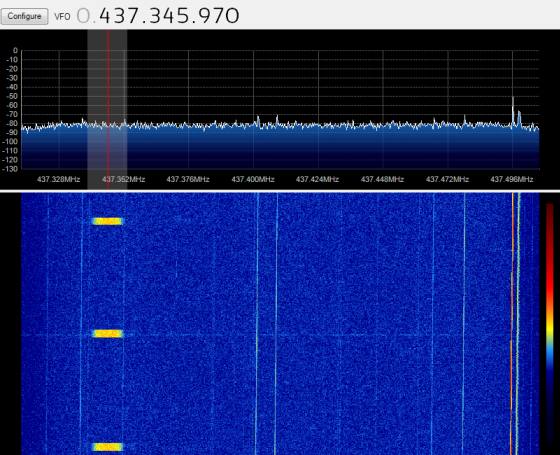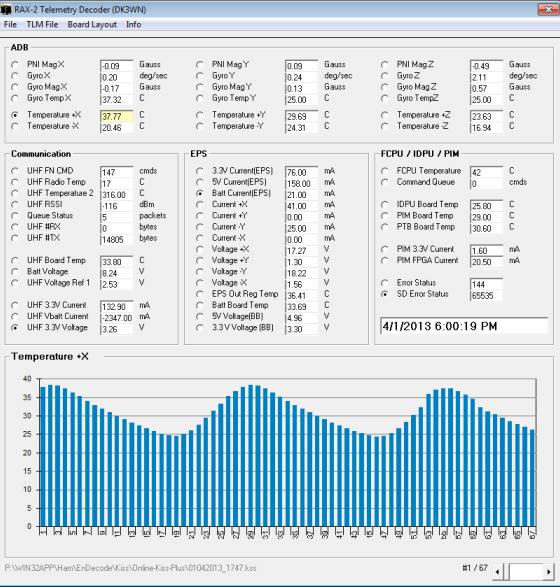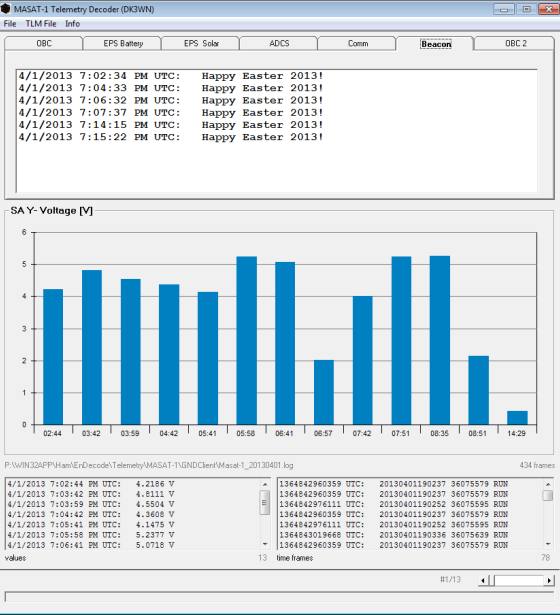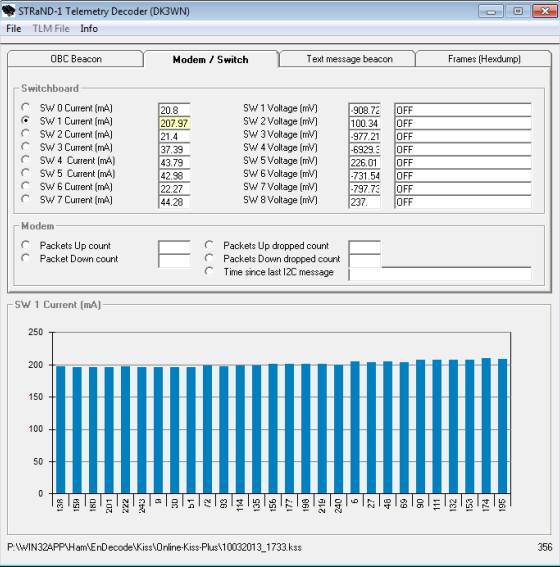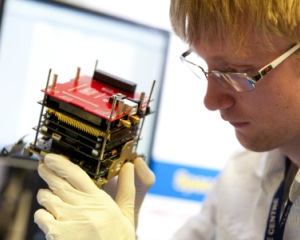 Just last weekend at the Amsat-UK Collegium, I heard Dr. Chris Bridges say that it would probably be November before we would hear STRaND-1 again, in that period the satellite would go in eclipse causing the system to reset.
Just last weekend at the Amsat-UK Collegium, I heard Dr. Chris Bridges say that it would probably be November before we would hear STRaND-1 again, in that period the satellite would go in eclipse causing the system to reset.
But and you may have heard it already, from Tuesday July 23 2013 the satellite is transmitting again and a lot of ground stations are collecting data from the little 3U Cubesat. Maybe now, when the satellite becomes stable, the smartphone experiments can begin.
Below is a SDRSharp spectrum from the signals that I received in the evening on the 23 of July 2013. During that first pass I already collected 96 frames where the max. elevation was 05 degree.
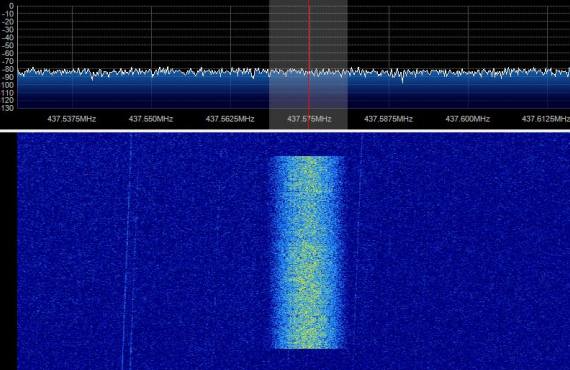
After that evening I tried to download as much telemetry as possible with for me a new record on Thursday evening of more then 1200 frames in three passes. But there was something strange when I used the STRaND-1 telemetry decoder made by Mike DK3WN. When I took my kiss file and used it with the decoder there was no OBC beacon data visible. After I had a word with Mike he told me to use Soundmodem from UZ7HO because the MixW packet decoder is dropping all frames that are shorter than 15 bytes. And indeed, now with another 9600 baud G3RUH decoder all frames are visible, even the smaller ones.
Here is an example of a 14 and 20 bytes frame:
2013-07-26 18:14:47.020 UTC: [14 Bytes KISS Frame (without CRC)]
1 > C0 00 DB DC 80 A5 06 02 2D 1F 02 FF 03 C0
À.ÛÜ€¥..-..ÿ.À
2013-07-26 18:14:48.030 UTC: [20 Bytes KISS Frame (without CRC)]
1 > C0 00 DB DC 80 A6 0C 02 89 05 08 A2 18 FF FF 88 B4 03 00 C0
21 >
À.ÛÜ€¦..‰..¢.ÿÿˆ´..À
Now, at same time as I am writing this article there are already 860 frames received with the UZ7HO Soundmodem software during the first two passes of this evening. The signals are strong, at moments they are 25 – 30 dB above noise.
After feeding these over 800 frames in to the decoder software, it produces the following output.
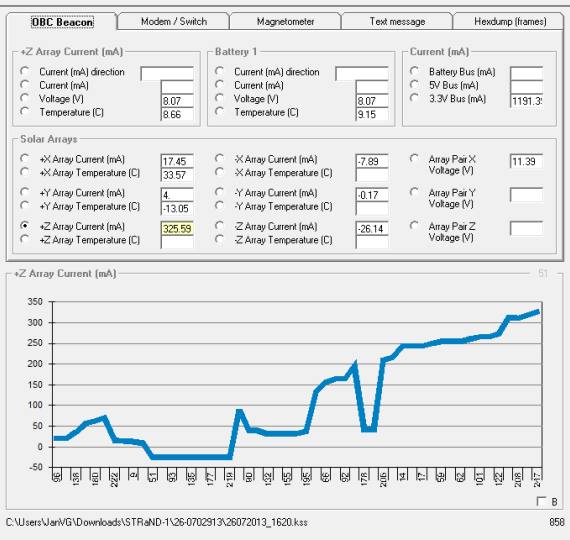
After the following three passes I have received 1371 frames using a FUNcube Dongle Pro+, SDRSharp 1144, RealTec Audio Mixer, UZ7HO G3RUH Soundmodem and AGW OnlineKiss from DK3WN.
26.07.2013 STRaND-1 16:27 - 16:36 UTC
26.07.2013 STRaND-1 18:05 - 18:19 UTC
26.07.2013 STRaND-1 19:45 - 19:57 UTC
If you want to use the kiss file, you can download it at the following location:STRaND-1_26072013_1620UTC.kss
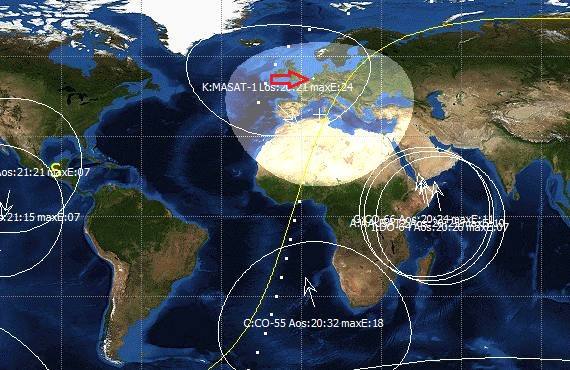
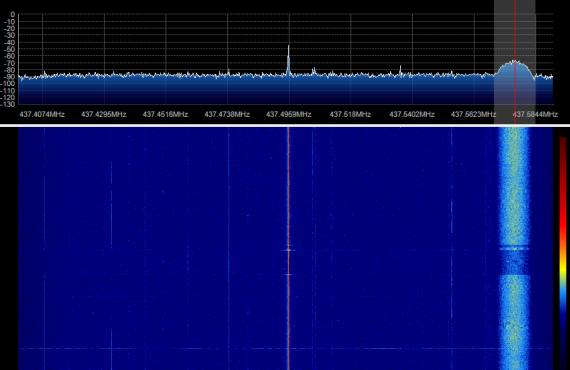
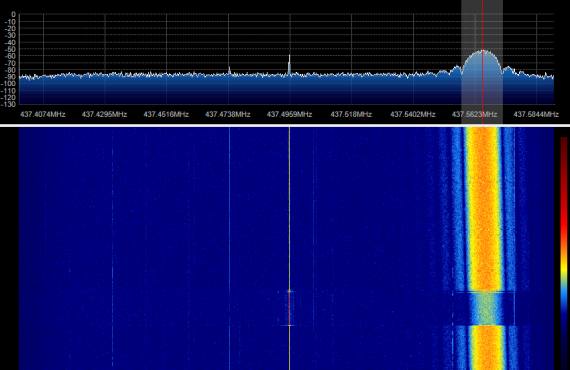
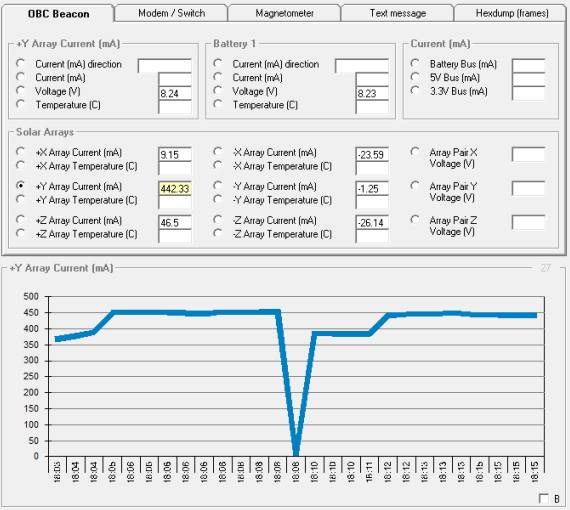

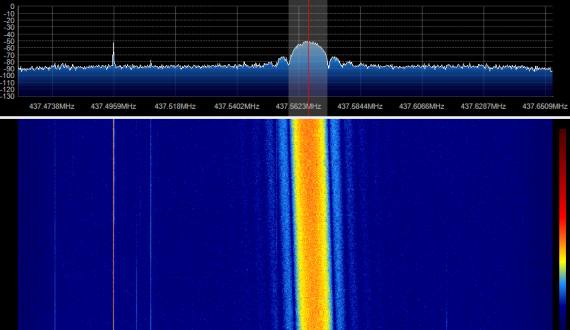
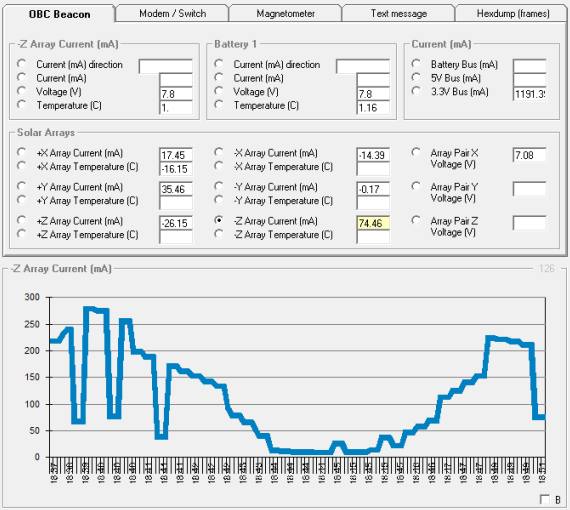
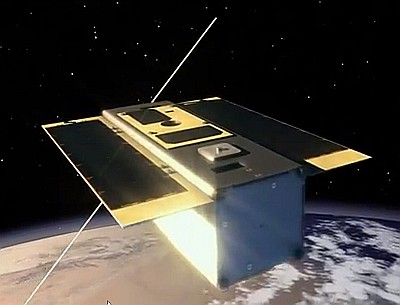 Dr. Chris Bridges (M0GKK) has requested that the ground stations that receive STRaND-1 telemetry to send there .kss files to strand.messages [at] gmail.com
Dr. Chris Bridges (M0GKK) has requested that the ground stations that receive STRaND-1 telemetry to send there .kss files to strand.messages [at] gmail.com Just last weekend at the Amsat-UK Collegium, I heard Dr. Chris Bridges say that it would probably be November before we would hear STRaND-1 again, in that period the satellite would go in eclipse causing the system to reset.
Just last weekend at the Amsat-UK Collegium, I heard Dr. Chris Bridges say that it would probably be November before we would hear STRaND-1 again, in that period the satellite would go in eclipse causing the system to reset.

